You know how you get that antsy feeling when fall starts consistently bringing colder temperatures and you know your basil’s days are numbered? If you love the taste of fresh herbs in your recipes, it can make you sad when your favorite herb is done for the season. Basil just can’t handle the cold of winter even though our San Antonio winters are usually fairly mild. Once daytime temperatures hit below 70°F and nighttime temperatures are below 40°F, it’s bye-bye basil. Or is it? Most of us know about drying herbs to preserve them for use after their season, but have you ever tried freezing them to preserve them? Some feel that freezing herbs helps to preserve the intensity of flavor in herbs better than drying them.
Today’s blog is all about freezing herbs, but whichever method you prefer to use to preserve your herbs, start making preparations for preserving your warm weather herbs now. Winter is coming!
2 Methods for Preserving Herbs by Freezing


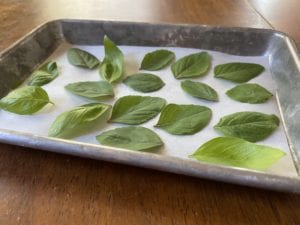

I am using basil as an example in the methods for preserving herbs by freezing them because time is of the utmost importance for me to save my favorite herb from the cold temperatures on the way.
The first method for preserving herbs by freezing is the simplest.
- Collect basil leaves (I always like to harvest in the morning when the oils are most concentrated)
- Thoroughly, but gently rinse the leaves clean with water.
- Pat basil leaves dry with paper towels, or if you have a salad spinner put the leaves in there and give them a whirl.
- Lay basil leaves in a single layer on a sheet pan.
- Place sheet pan in the freezer and allow basil leaves to freeze for 1-2 hours.
- Store basil leaves in a freezer bag and place back into the freezer. Preserved herbs will keep for 3-4 months in the freezer.
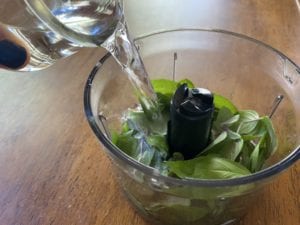

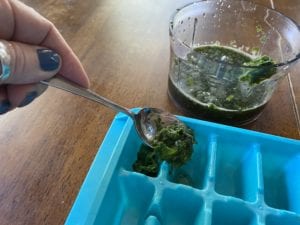

The second method for preserving herbs is pretty simple as well, and actually will keep herbs for a longer duration of time.
- Repeat steps 1-3 in the above method for preserving herbs.
- Instead of using a sheet pan, put your basil leaves into a food processor and add enough water to just slightly cover the leaves.
- Pulse your food processor to create a sludgy consistency.
- Pour contents of food processor into ice trays (you may need to use your fingers to help scoop out the basil pulp to distribute it evenly)
- Place ice trays in freezer and allow contents to freeze.
- Store in freezer bags or airtight plastic containers. Preserved herb ice cubes will usually keep for 6months to close to a year.
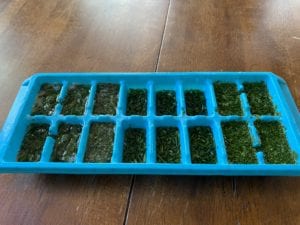

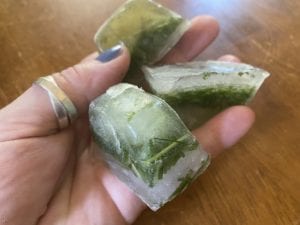

Two extra ways to preserve herbs using the ice tray method.
- Option #1 Repeat step 1-3 in above preserving herbs methods, then add a tbsp or a tsp (whatever you mostly use in recipes) of chopped herbs directly to the trays and fill about halfway with water. Push herbs into water as much as you can and then freeze. Once frozen, top off the herb ice cubes with additional water to make sure the herbs are completely incased. Store in freezer bags or other airtight freezer container for 6-12 months.
- Option #2 is to do option #1 but swap the water for extra virgin olive oil (you most likely wont have to top off the herb ice cubes a second time.
By the way, preserving your herbs by freezing is not limited to warm-weather herbs. You may want to try this with any annual herb that could be damaged by frost, or in contrast, herbs that will die out and go to seed because of the heat of summer temperatures. You can always have fresh herbs on hand for your creations in your kitchen by preserving them throughout the year. Try preserving chives, cilantro (which goes to seed quickly by May), and oregano. Frozen herbs will be great for your recipes, but not used as garnishes such as in fresh bruschetta. (There is no substitution for a fresh picked leaf of basil to top a fresh tomato on crusty bread! You’ll have to buy or wait til next summer for this one.)
Now go stock up that freezer with fresh basil! Quick!
~The Happy Gardener, Lisa Mulroy


Hello-
Is there a way to save part of actual plant (clippings?) and keep indoors until weather warms up, and then replant outside? If so, what would you recommend? thanks!!!
Hi Sara!
Absolutely! This is called propagation. Here is our page that has information on a couple of different methods for propagating plants. Propagating Plants It’s a great way to save your favorite plants and grow them again the following season.